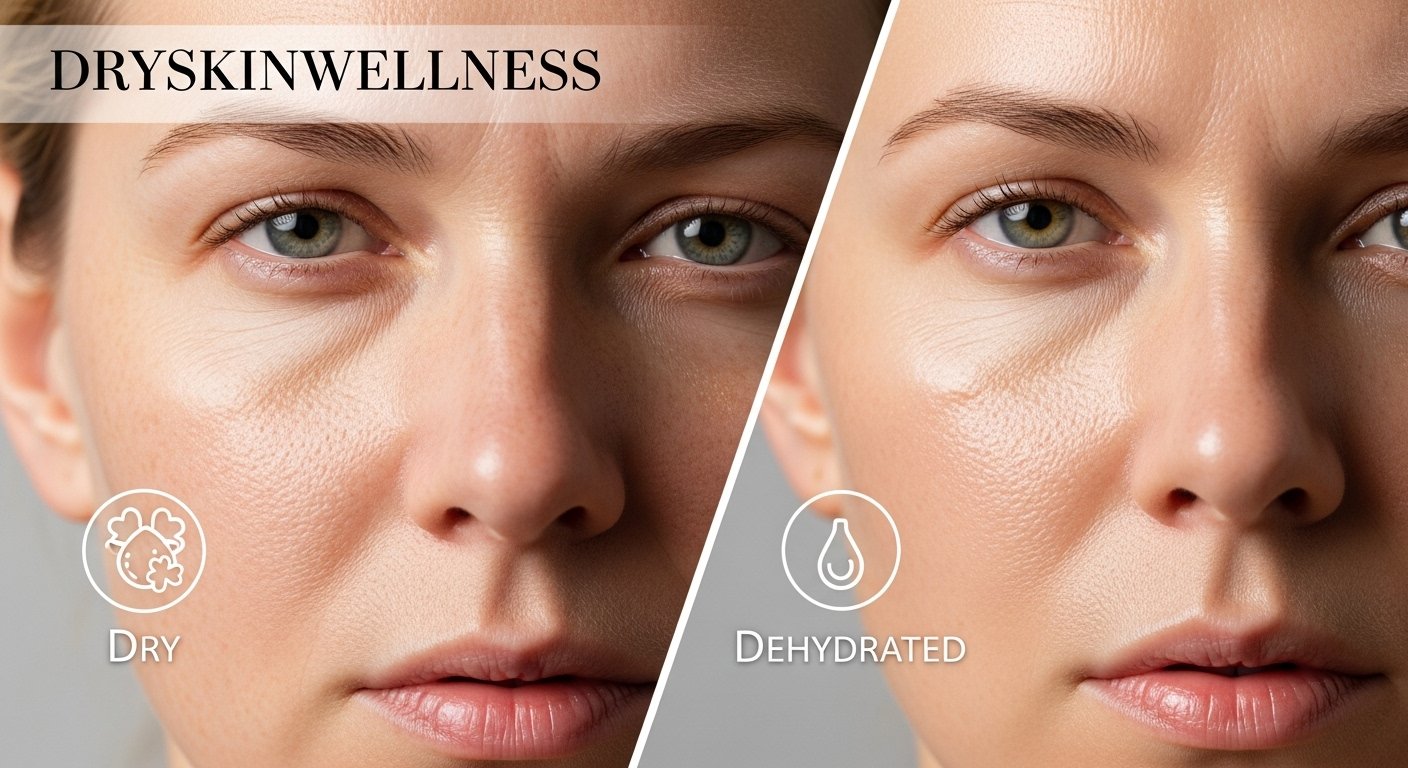Dry VS Dehydrated Skin – What’s The Difference?
Dry skin is a term used to describe two distinct skincare concerns. Though often used interchangeably, these terms have significant differences to consider. This article will explore the differences between Dry vs Dehydrated Skin. It will offer tips for identifying your skin type and proper care steps.
How to Tell the Difference Between Dry and Dehydrated Skin
Dry Skin
Dry skin is a type of skin condition due to genetics, environmental factors, or age. It causes the skin to become flaky, itchy, and rough. Dry-skinned individuals may feel tightness after showering or washing their faces.
Dehydrated Skin
Lack of water in the skin cells causes dehydrated skin. It is often experienced as dullness, tightness, and fine lines. Unlike dry skin, moisturizer for dehydrated skin it can happen to anyone, regardless of age or lifestyle. It’s caused by insufficient water or using products too harsh for your skin type.
Steps for Distinguish
Follow simple steps to distinguish dry from dehydrated skin.
• Take a look at the texture of your skin –
Dry skin is usually rough or flaky, whereas dehydrated skin tends to be duller.
• Feel for moisture –
Dry skin often feels tight and lacks moisture. In contrast, dehydrated skin will still keep some water.
• Check the tone of your complexion –
Dry skin can cause blotchy patches or a dull appearance. So, dehydrated skin looks more grey or ashen.
How to Care for Dry Skin vs. Dehydrated Skin
Using products formulated for your specific type is crucial for both skin types.
Dry Skin
For dry skin, seek products with hydrating ingredients like hyaluronic acid and ceramides. These help keep moisture in the skin. Avoid harsh ingredients like retinol or exfoliating acids. These can strip away the skin’s natural barrier and worsen dryness.
Dehydrate skin
For this skin type, focus on products with hydrating ingredients like glycerin, aloe vera, and antioxidants. These can help draw moisture into the skin and protect against environmental aggressors. Ample water intake keeps your skin hydrated and healthy.
Use Sunscreen
It is also essential to use good sunscreen, as UV rays can worsen dryness and dehydration in the skin. Choose a broad-spectrum product for protection against UVA and UVB rays.
Bonus Tip: Applying a facial mist throughout the day can help to refresh and rehydrate dry or dehydrated skin. Manufacturers create facial mists with natural ingredients. They help to lock in moisture and provide a quick boost of hydration. Ensure you choose a product formulated for your skin type and needs!
Skin Structure and Function
Structure
- The skin is the body’s largest organ.
- It plays a vital role in shielding us from environmental stressors.
- It regulates temperature, guards against pathogens, and synthesizes vitamin D.
- The skin has three layers: epidermis (outer), dermis (middle), and hypodermis (innermost).
- The epidermis is the top layer of skin and serves as a barrier against external factors. It contains cells called keratinocytes, which keep water in and irritants out.
- The middle layer of the dermis contains sensory nerve endings, sweat glands, and hair follicles.
- The hypodermis, the deepest layer of skin, consists of fat cells.
- Sebum, an oily substance, is crucial for skin structure. Sebum helps keep the skin waterproof and also acts as an antibacterial agent.
Function
- The function of our skin is to protect us from external factors like bacteria, pollutants, and UV rays.
- It keeps water in our bodies and regulates body temperature by releasing sweat when it gets too hot.
- It also plays a role in helping us sense pain, itchiness, touch, and other sensations.
Identifying Dry Skin vs. Dehydrated Skin
When distinguishing Dry vs Dehydrated Skin, watch for key differences. Dry skin often feels tight and flaky. So, dehydrated skin looks dull and lacks moisture. The complexion’s tone can reveal the difference. Dry skin appears blotchy or flat, while dehydrated skin looks grey or ashen. Examining the skin’s texture aids in differentiation. Dry skin is rough and flaky, while dehydrated skin is duller.
Skincare Approaches for Dry Skin Vs. Dehydrated Skin
The most important thing in caring for either type of skin is to use products formulated for your skin type. Seek hyaluronic acid and ceramides for dry skin to keep moisture. Avoid harsh ingredients like retinol that can damage the skin’s natural barrier and worsen dryness.
To address dehydrated skin, focus on products with ingredients like glycerin and antioxidants. These can help draw moisture into the skin and protect against environmental aggressors. Pay attention to the importance of staying hydrated throughout the day. Ample water intake is vital for keeping your skin healthy and hydrated.
Importance of Hydration for Both Skin Types
Hydration is essential to any skincare routine, no matter what your skin type. Proper hydration preserves the skin’s protective barrier, reducing inflammation and enhancing texture. Hydrating moisturizer protects dry skin and locks in moisture. And for dehydrated skin, using a face mist throughout the day can help refresh and rehydrate.
Consulting a Dermatologist
If you are unsure about your skin type or are struggling with dryness or dehydration, consult a dermatologist. Skincare professionals offer personalized advice and tailored treatment plans. They can also recommend effective products that are safe for your skin type.
FAQ’s
How do I know if my skin is dehydrated or dry?
The best way to tell if your skin is dry or dehydrated is by looking at your complexion. Dry skin usually looks blotchy and dull, while dehydrated skin can appear grey or ashen.
What type of skin is dry and dehydrated?
Dry and dehydrated skin can affect all skin types, including regular, combination, oily, and sensitive. Dryness and dehydration are distinct issues. Dryness is due to insufficient oil production, while dehydration results from harmful skin water content.
What is the difference between drying and dehydration?
“Drying” refers to the skin losing natural oils and becoming cracked or flaky. It can be due to cold weather, harsh skincare products, or ageing. “Dehydration” refers to skin lacking water, resulting in a dull, tight, and lifeless appearance.
Conclusion
Dry vs Dehydrated Skin needs distinct treatment approaches. Understanding dry and dehydrated skin distinctions is crucial for healthy, glowing skin. Nourish your skin with the right products and lifestyle habits. Stay hydrated, and use daily sunscreen to keep your skin healthy and radiant.


